Before disassembling, we wash and clean the gearbox.
Drain the oil from the gearbox.
To complete the work you will need: screwdrivers (two), interchangeable heads "by 13", "by 17", extension cord, wrench, keys "by 10", "by 13" (two), "by 17", "by 19", "30", impact screwdriver, circlip pliers, hammer, universal pliers.
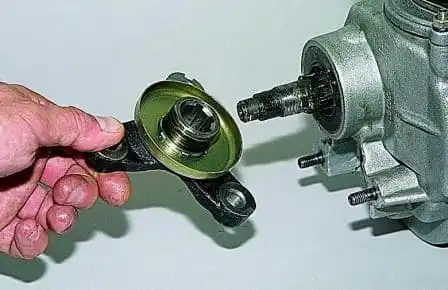
Remove the flange of the flexible coupling from the toe of the output shaft of the gearbox
For disassembly and assembly of the gearbox gear selection mechanism, see the article - "Disassembling the gearbox gear selection mechanism".
We install the gearbox with the clutch housing on the workbench.
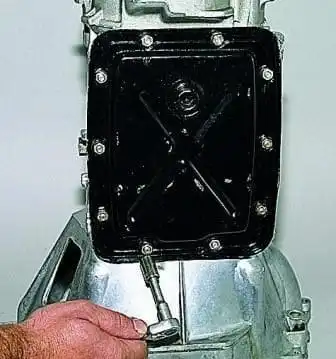
With a “10” head, we unscrew ten nuts securing the lower cover of the gearbox.

Remove the cover

Remove the gasket
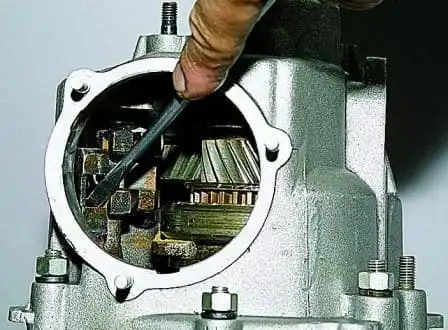
Using a screwdriver, through the hole in the gear selection mechanism, we move down the stem of the I-II gear fork (this turns on the II gear)
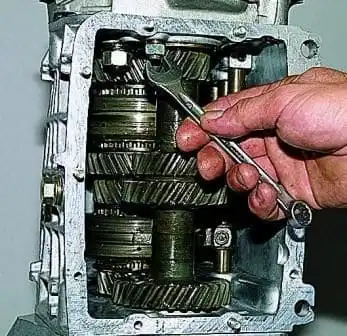
Using the “13” key, we unscrew the rear cover fastening nut located inside the box body.
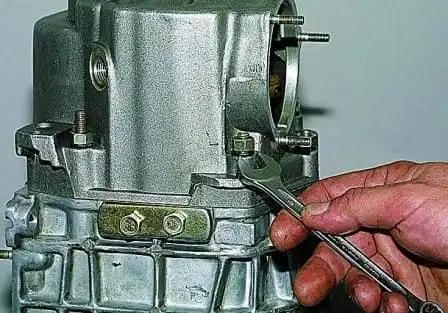
Using the “13” key, we unscrew the five nuts securing the rear cover located outside the case.
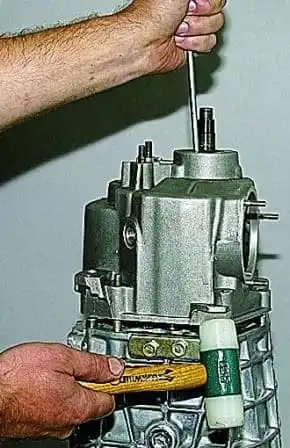
We tap the tides of the cover with a hammer, while using a screwdriver (or a suitable piece of pipe with the output shaft seal removed) we hold the rear bearing on the output shaft.
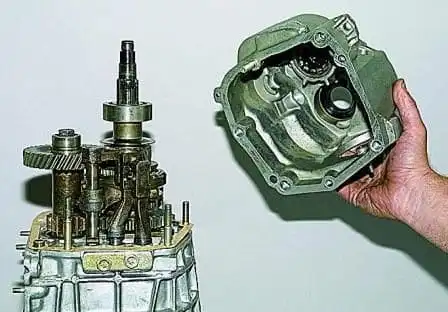
We shift the cover from the studs and remove it by turning it clockwise (looking from the side of the output shaft shank) to prevent the cover from touching the rods and the gear unit of the 5th gear and reverse.
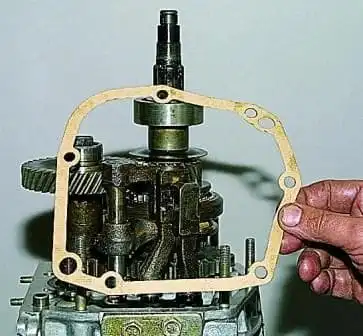
Remove the cover gasket.

To replace the bearing of the gear unit of the V gear and reverse, pry off the bearing rollers with a screwdriver and remove the rollers from the cage
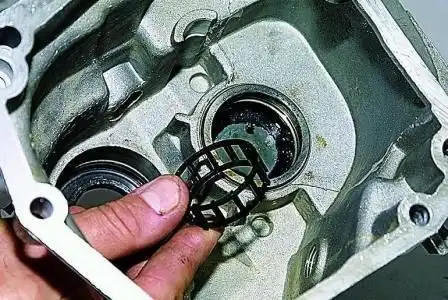
Retrieve the separator.
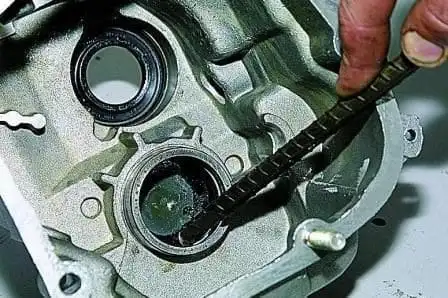
Crochet the outer ring of the bearing
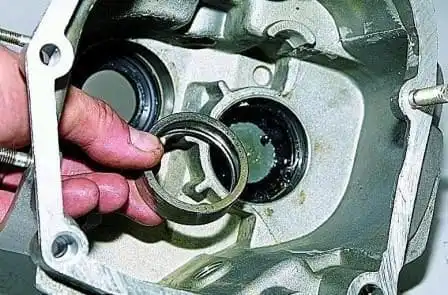
Remove the bearing from the seat of the rear cover

Remove the thrust ring of the rear bearing of the secondary shaft
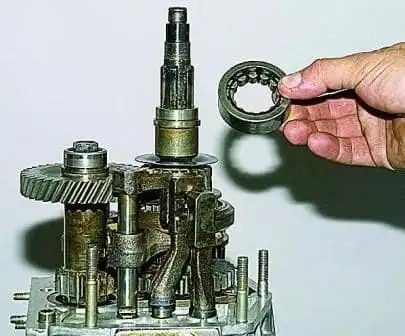
Remove the outer ring of the bearing with the cage and rollers.
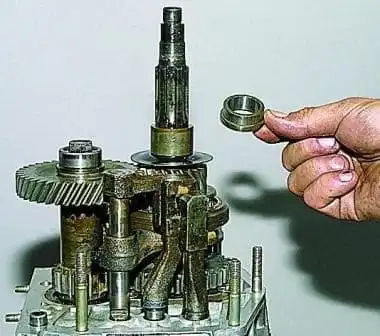
Remove the inner race of the bearing.
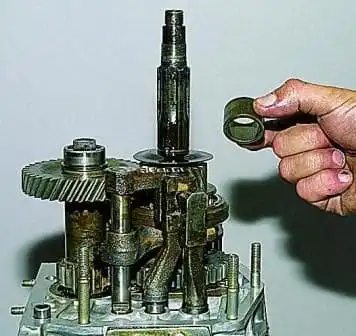
Remove the spacer
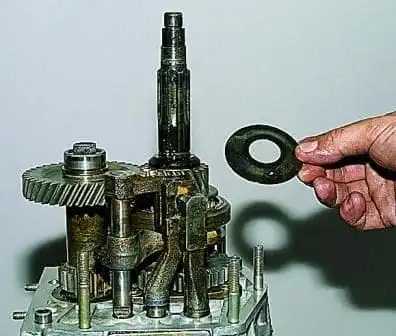
Remove the oil slinger.

To stop the shafts from turning, two gears must be engaged. II gear was engaged when the rear cover was removed.
Before engaging reverse or V gears, we release the fork for engaging these gears.
To do this, use the “10” key to unscrew the bolt securing the fork to the stem.

Pressing the fork down with a screwdriver, we turn on the reverse gear
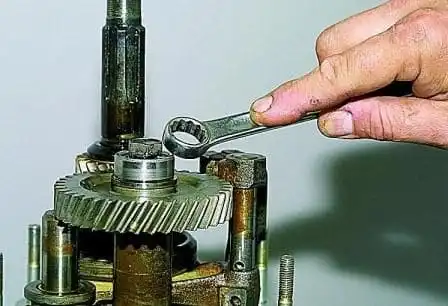
With a ring wrench (head) “by 17”, we unscrew the bolt securing the gear unit of the V gear and reverse gear.
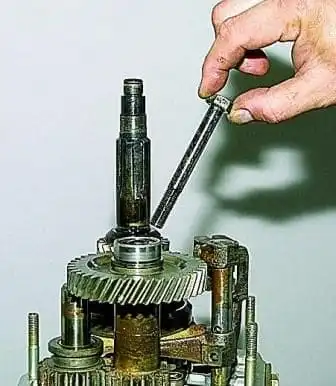
Remove the bolt
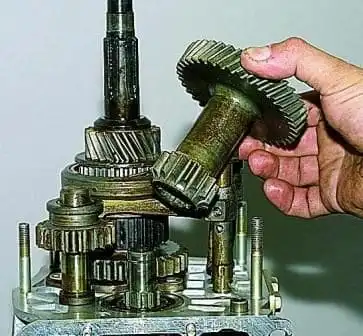
Remove the gear unit from the splines of the intermediate shaft
We clamp the V gear and reverse gear unit in a vise with soft metal jaw pads.
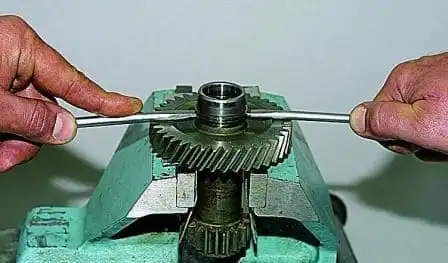
Using two screwdrivers, we press the inner ring of the gear block bearing
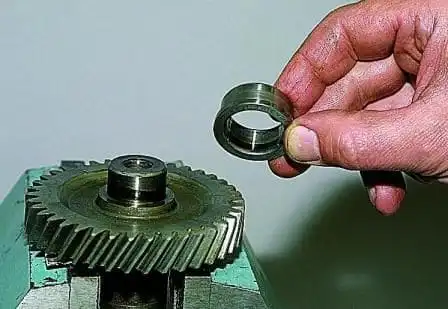
Remove the inner ring.
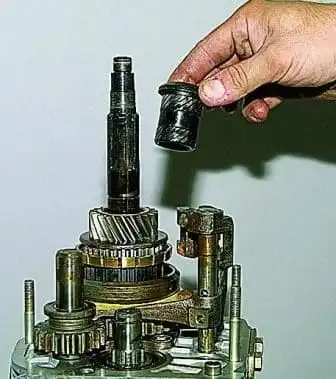
Remove the V gear bushing
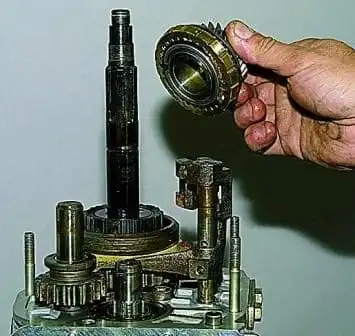
Remove the gear itself with the synchronizer blocking ring
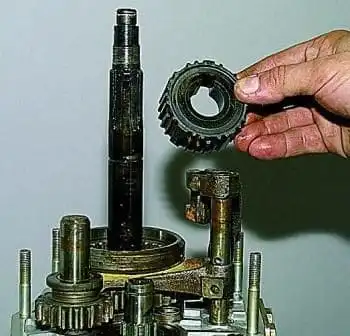
Remove the hub
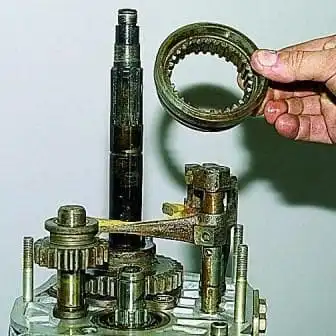
Remove the synchronizer clutch.
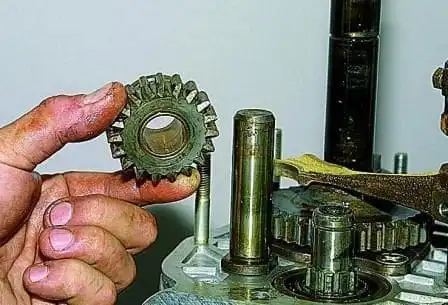
By turning the V gear and reverse fork on the rod to the secondary shaft, remove the reverse gear.
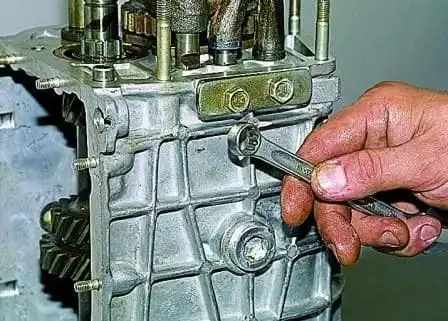
With a 13" spanner, unscrew the two bolts securing the clamp cover
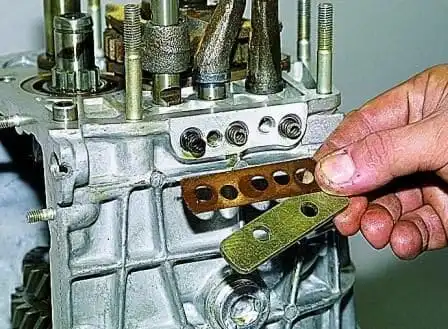
Remove the cover and gasket

We take out the springs of the clamps (the spring of the rod of the V gear and reverse is longer than the other two and has a dark coating color).
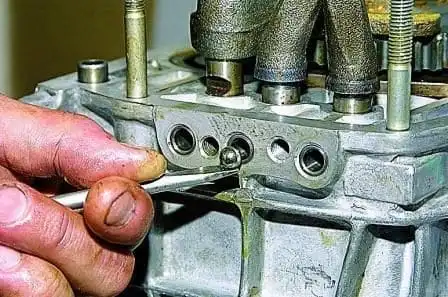
Use a magnetized screwdriver to remove all three latches.
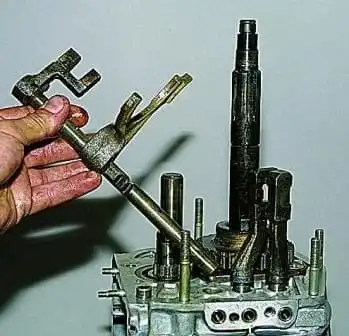
We take out the V gear and reverse gear engagement rod with a fork.
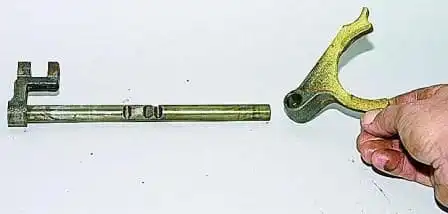
Remove the plug from the stem.
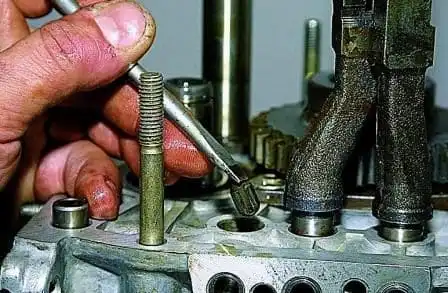
With a magnetized screwdriver, we remove the blocking cracker from the hole in the gearbox housing, which is located between the crankcase slots for the rods of the 5th gear and reverse gear and III–IV gears.
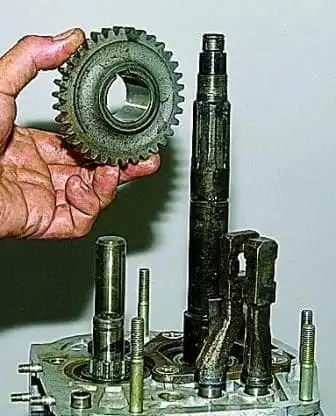
Remove the reverse driven gear from the secondary shaft.
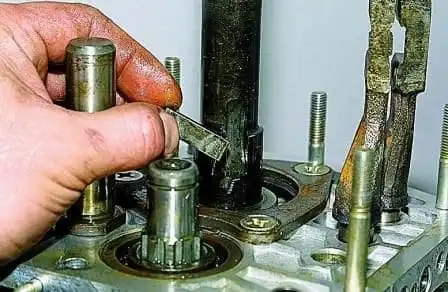
Remove the key from the groove of the shaft.
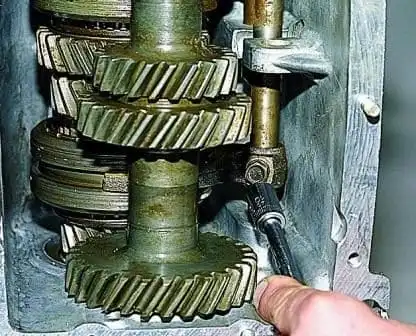
With a “10” head, we unscrew the bolt that fastens to the stem of the III-IV gear fork.

Removing the stem
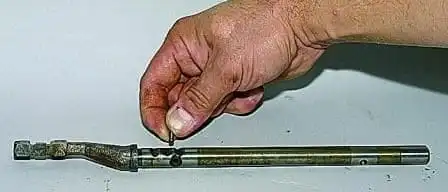
A blocking cracker is inserted into the hole of the rod, take it out
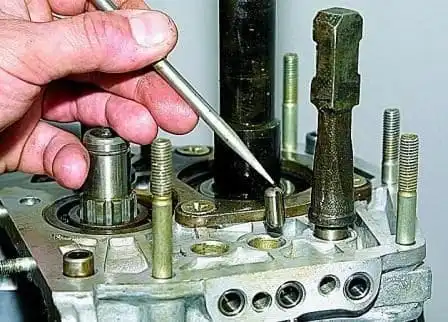
Use a magnetized screwdriver to remove the blocking cracker from the hole in the gearbox housing.
The hole is located between the crankcase sockets for the rods of I-II and III and IV gears (this cracker is noticeably longer than the cracker located between the engagement rod of the 5th gear - reverse and the engagement rod of the III-IV gears).
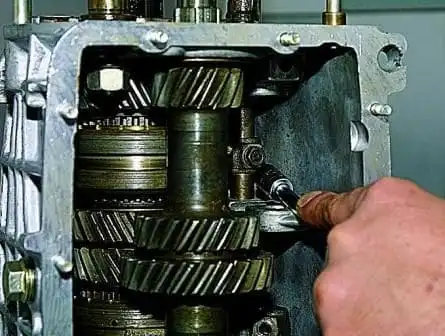
With a “10” head, we unscrew the bolt securing the I-II gear fork to the stem.
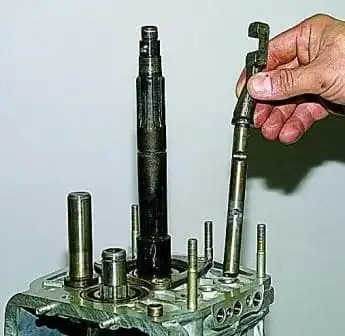
We take out the stem.
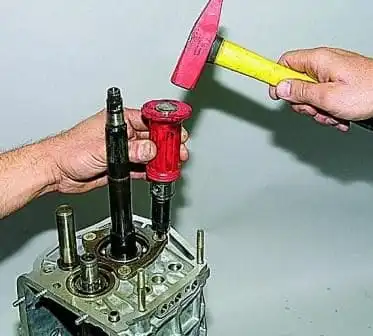
Using an impact screwdriver with a Phillips tip, we unscrew the three screws securing the lock plate of the intermediate bearing of the secondary shaft.
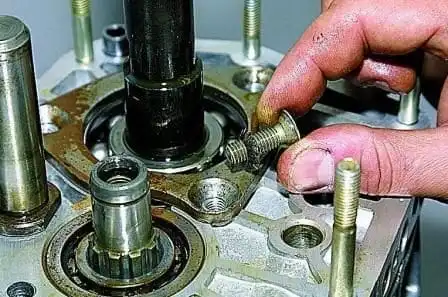
The screws are secured with special washers.

Remove the lock plate.
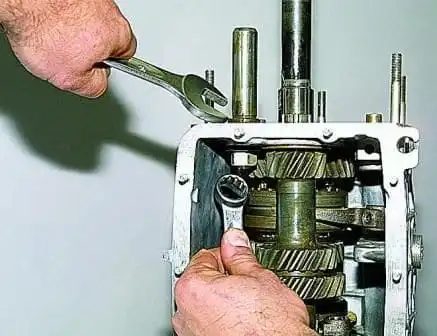
Using a 19 spanner wrench, unscrew the nut securing the reverse intermediate gear axle, holding the axle from turning with a 24 wrench
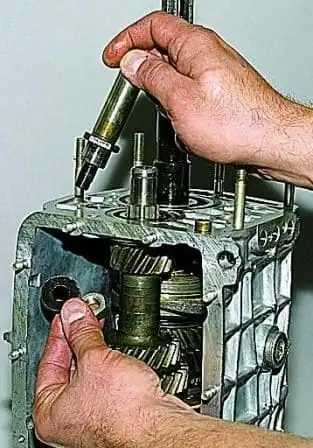
Remove the shaft of the reverse idler gear
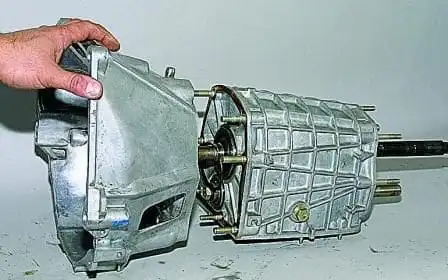
Having unscrewed the nuts securing the clutch housing, we separate the clutch and gearbox housings
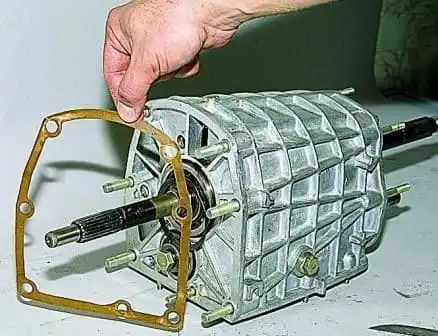
Remove the gasket
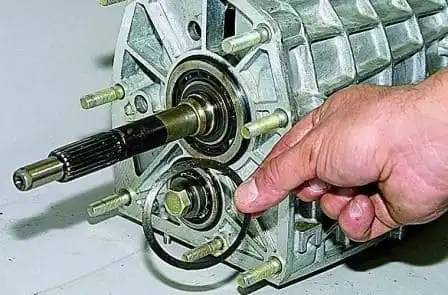
Remove the spring washer with a conical surface from the input shaft (with a smaller diameter it faces the bearing).
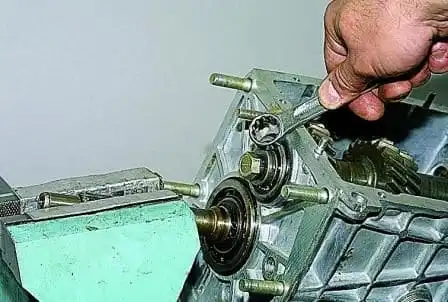
We clamp the splined part of the input shaft in a vice with soft metal jaws.
Using a “19” spanner, unscrew the bolt of the clamping washer of the front bearing of the intermediate shaft.
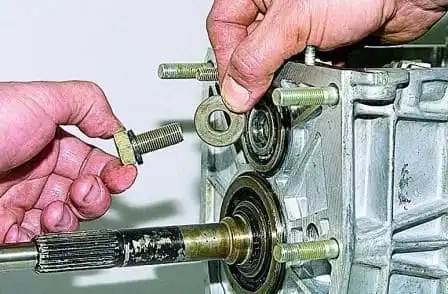
Remove the bearing clamp washer.
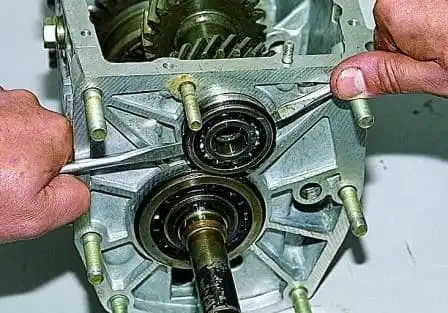
Using two screwdrivers, we pry the front double-row bearing of the intermediate shaft by the adjusting ring
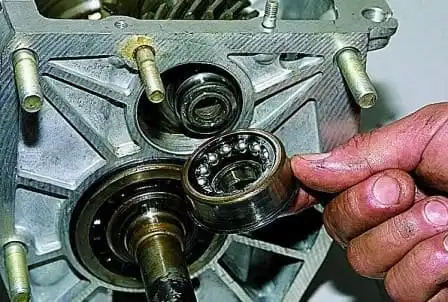
Remove the bearing. When removing a bearing, its rear inner ring may remain on the shaft.
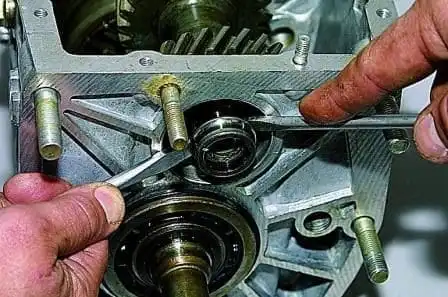
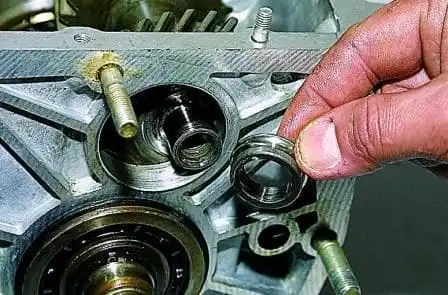
Using two screwdrivers, we press the rear inner ring of the bearing and remove it.
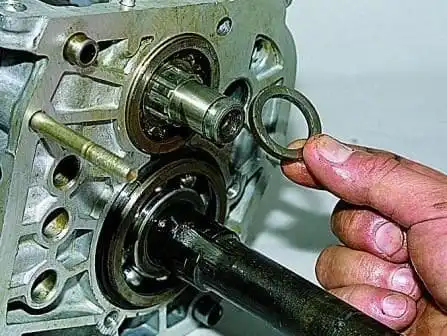
We take out the thrust ring of the rear bearing of the intermediate shaft.

By inserting a screwdriver between the ends of the bearing and the gear of the 1st gear of the intermediate shaft, we move the rear bearing
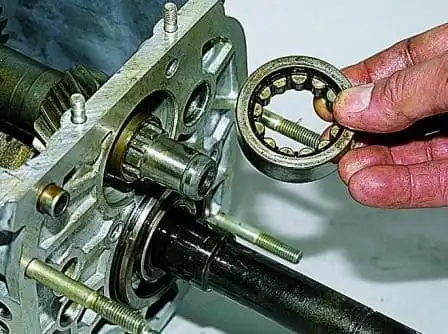
Remove the outer race of the bearing with cage and rollers
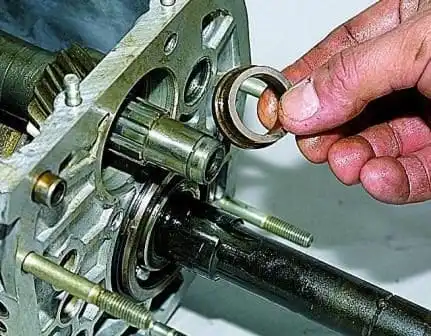
Remove the inner race of the bearing from the toe of the shaft
Move the intermediate shaft back
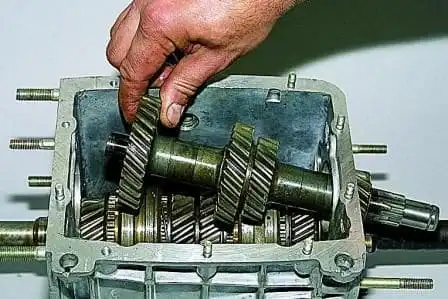
Remove the intermediate shaft from the gearbox housing.
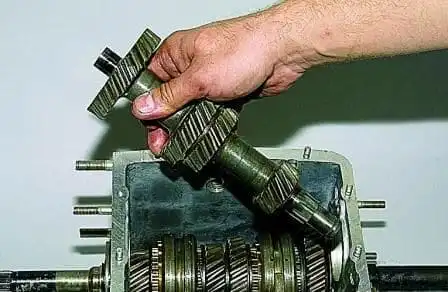
We pry with two screwdrivers on the mounting ring of the input shaft rear bearing

We take out the input shaft assembly with the bearing and the synchronizer blocking ring
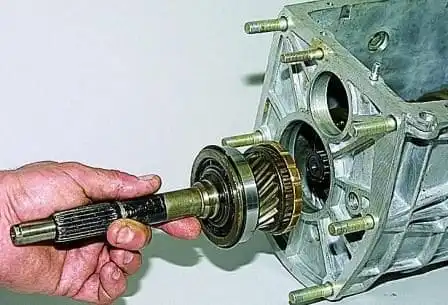
Remove the needle bearing from the front toe of the secondary shaft.

Remove the shift forks of 1st and 2nd, 3rd and 4th gears.
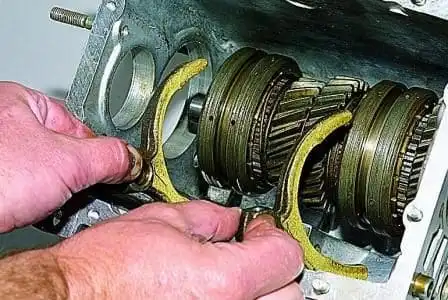
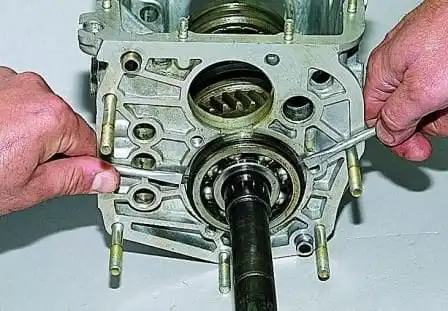
Using two screwdrivers, we pry on the adjusting ring, the intermediate bearing of the secondary shaft and remove it.
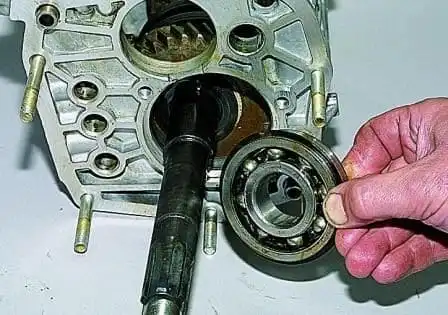
Tilting, we remove the secondary shaft assembly from the gearbox housing with gears, couplings, hubs and synchronizer blocking rings.
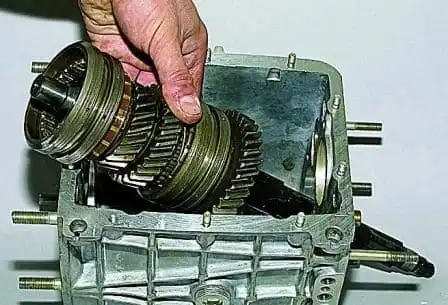
We assemble the gearbox in the reverse order.
If, when removing the front double-row intermediate shaft bearing, its rear inner ring remains on the shaft, then the bearing must be assembled before installation.
To do this, carefully remove the separator with balls from the outer ring of the bearing with a screwdriver and put it on the inner ring (removed from the shaft).
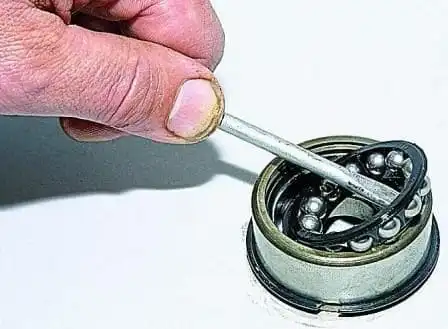
The cage with balls and the inner ring is inserted into the outer ring of the bearing.
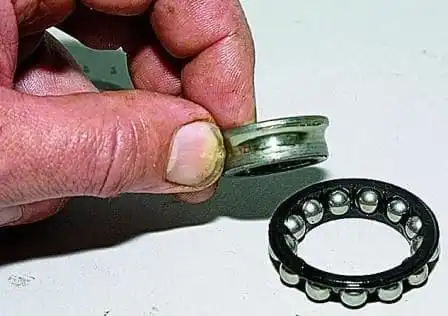
When assembling the input shaft with a suitable piece of pipe, we press the bearing onto the shaft, relying on its inner ring.

After installing the secondary and intermediate shafts into the gearbox housing, we press in the front and rear bearings of the intermediate shaft, the intermediate bearing of the secondary shaft and the inner ring of the gear block bearing.
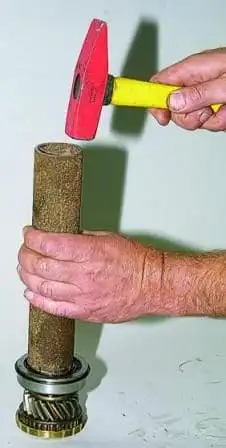
We press the outer ring of the bearing of the gear unit of the V gear and reverse gear with a tool head of a suitable size (a piece of pipe) into the socket of the rear cover.
Insert the separator and rollers into the outer ring of the bearing.
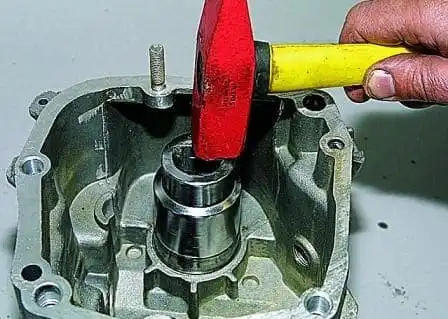
To prevent loosening of the bolt securing the gear unit of the 5th gear and reverse gear, we apply thread sealant to the thread of the bolt.
For ease of installation of the rear cover, we install the rear bearing assembly on the secondary shaft.
It is advisable to lubricate all gaskets with a thin layer of silicone sealant.
When assembling the nano gear selector sim on the ball joint grease Litol-24.
Gearbox assembly technology and defect detection are described in the article - "Gearbox assembly technology "
We look at the disassembly of the input and output shafts in the article - “Disassembly of the gearbox shafts”.





